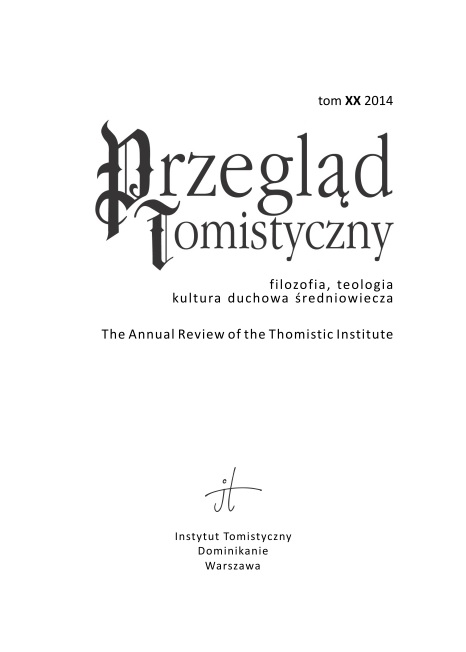BOGUSŁAW KOCHANIEWICZ OP, The Mediation of the Blessed Virgin Mary according to Bartholomew of Breganze, O.P.

Volume XX: 2014
Philosophy — Theology— Spiritual Culture of the Middle Ages
ISSN 0860-0015
e-ISSN 2544-1000
SUMMARY
The doctrine on Marian mediation laid out in Sermones de Beata Virgine by Bartholomew of Breganze is based on a hierarchical schema of mediation that involves a chain of subordinate mediations. the idea of mediation explained here is integrated closely with the notion of the Church as a Mystical Body of which Christ is the Head. In this model, the role of Mary is compared to the neck (collum) in the human body, or a stem (virga), which connects the root with the flower. this approach tries to emphasize that all graces, which have their source in Christ, flow to the people of God through the mediation of Our Lady. It opens the door to some serious theological consequences. the uniqueness of Marian mediation, accentuated by Batholomew, brings into question of the universality of Christ’s mediation, which might seem to be imperfect. Moreover, the doctrine of Bartholomew exhibits a lack of in-depth reflection on the sanctifying activity of the Holy Spirit and a newer way of explaining the mystery of the Church. Another important shortcoming of the Marian doctrine of Batholomew is that it put the functions of Christ and Mary on the same level by assigning them separate, complementary functions in their relations with the people of God depending on a person’s sex: Christ bestows His graces on men, while, through Mary, graces flow to women. the lack of any unified doctrine in the sermons of the Bishop of Vicenza is confirmed by his exaggerated expressions, which cause confusion and can lead to controversial conclusions. These shortcomings show a lack of recognition of the original issue of Marian mediation in sermons of the preacher of Breganze. the sermons are nevertheless useful examples of the impact of the doctrine of Saint Bernard of Clairvaux on the Mariology of the Dominican preachers of the thirteenth century.
